Category: Uncategorized
As the world is moving to Industry 4.0 standards and some countries formalizing these standards, workflow automation is going to play a central role as a driving force for telecom organizations. Workflow Automation reduces the time and costs it takes to activate and provision services, thereby increasing the acquisition of end-users.
Workflow Automation
Huge traffic and signal compliance create difficulties to collaborate with peer networks, understand their difficulties, and reach out to the right contact network for a possible solution.
SharePoint resolves the problem of seamless collaboration and communication between internal stakeholders – different teams, departments & geographies.
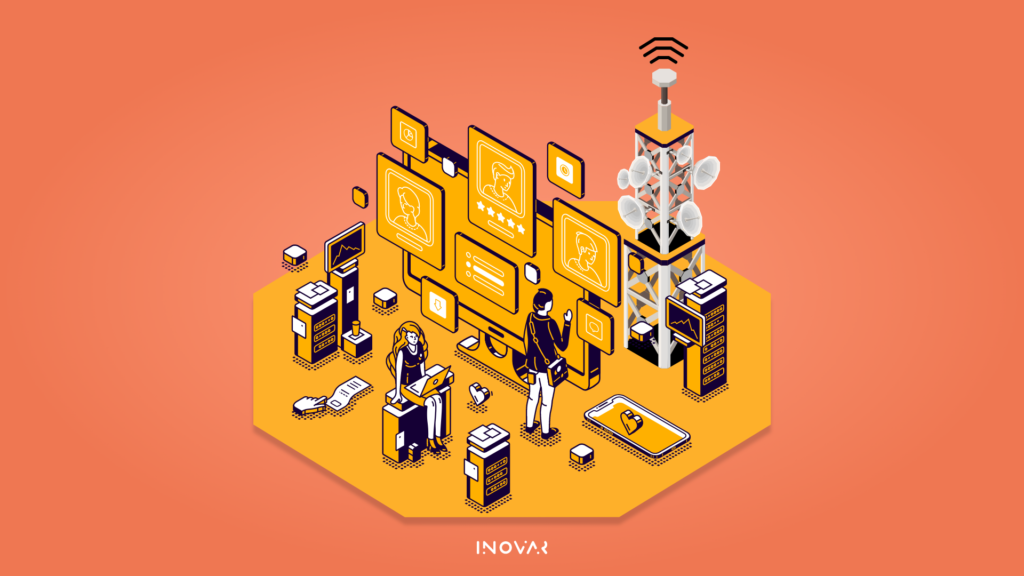
By implementing SharePoint Online telecom organizations can move a lot of their vital collaboration tools to the cloud, enabling peer networks to share problems and concerns, access a single content from a different point, and add value while on the move. With the offline access feature, all data automatically gets synchronized between SharePoint Online and local computers whenever a network connection is available.
SharePoint Online offers a real-time co-authoring feature to enable the stakeholders to collaborate in real-time.
Our proficiency in providing SharePoint solution
Our US telecom client was facing collaboration and communication issues due to an improper and interrupted operation. According to Shivsankar Barik, VP Delivery of Inovar Consulting, the main challenge was that our client’s organization had an issue in collaborating with peers and reaching out to the right SPOCs to find important information.
Our target was to provide them with an automated technical solution to ensure effortless operations and uninterrupted communication. We cut down their time to market and improved their operational efficiency with a 40% improvement in site/signal compliance achieved with the help of big data analytics and helped them migrate from SharePoint on-premise to SharePoint Online. The entire automated environment enriches the visualization and monitoring power in a network. It also provides real-time alerts to avoid any sudden failure.

“What started as workflow automation solution, resulted in huge cost savings optimizing end to end process”- Apratim Ghosh (CEO, Inovar Consulting).
We have come a long way since then having managed their existing SharePoint Sites, built net new sites for different teams. Data security and access control are other vital concerns of our clients. We deploy a hybrid cloud solution applying next-gen technology for controlling access with better data security.
Automated telecom infrastructure with a customer-centered, data-driven culture can drive profit, increase productivity and significantly reduce costs. If you are also looking for an automated technology solution to manage your telecom networking and communication systems feel free to reach out to us.
With the fast pace of cloud changes, cloud lock-in remains a popular refrain. But do you know what does it mean? How can you make sure that you’re boosting your cloud investment at the same time maintaining portability in mind?
In this article, we are going to talk about how business owners and analysts will strategize the best cloud approach to maximize their ROI and gain ten times better solutions with the proper cloud architecture.
Cloud bursting! Hybrid cloud! On & Off-premises! Multi-cloud! Cloud strategists, analysts, and architects are aware of these phrases over the past ten years. Each of them makes logical sense, but in recent times, it’s the last – multi-cloud – that I’ve seen in actual practice the most.
If you are not clear about what multi-cloud is — let me explain!
What is multi-cloud?
Multi-cloud is the utilization of two or more public and/or private cloud providers to assist the IT services and infrastructure of an organization. A multi-cloud strategy typically consists of a mix of primary public cloud providers particularly, Amazon Web Services (AWS), Google Cloud Platform (GCP), Microsoft (Azure), IBM, and Alibaba.
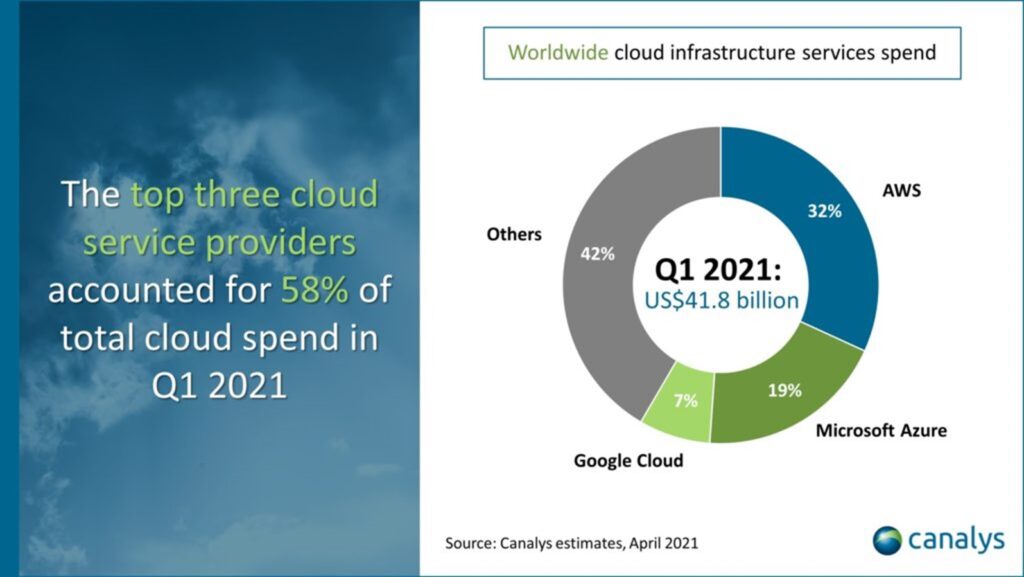
Businesses that embrace a multi-cloud architecture may leverage various public clouds in combination with private cloud deployments and traditional on-premises infrastructure.
Organizations prefer the best services from each cloud provider based on values, technical specifications, geographic availability, and other factors. Each day, every organization practices multiple types of data and diverse applications. Most of the cloud vendors specialize in a particular area, so being able to use different clouds encourages companies with the agility they need. This may mean that a company uses Google Cloud for development/test while using AWS for disaster restoration and Microsoft Azure to concoct business analytics data.
What is a multi-cloud strategy?
A multi-cloud environment can combine SaaS, PaaS, and IaaS deployments from more than one public or private cloud service provider to meet an organization’s technical and business needs.
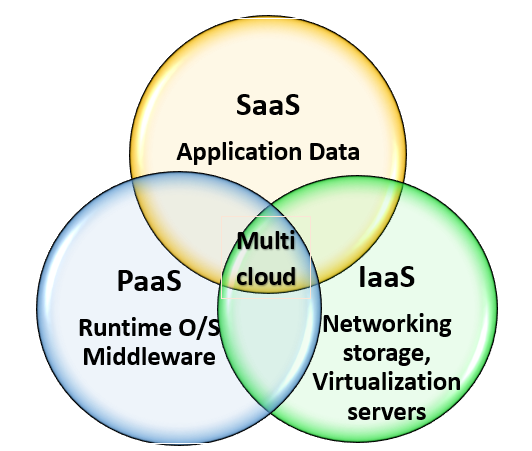
For example, many businesses initially jump into the cloud tepidly, at least one small service or application at a time. Shortly, this converts unwieldy, and you have to clean up your cloud sprawl. Hence, you need a strategy.
A multi-cloud approach empowers organizations to advance the efficiency of their IT spending and business operations by preferring an appropriate service and provider for each use case. The main concern of every organization is to reflect their needs are and align their needs with the best cloud providers applying a multi-cloud strategy. The forester industry analysts conducted an in-depth analysis of over 600 cloud strategy professionals to determine the leading use cases for multi-cloud architecture.

Below we have discussed the modern use cases for a greater understanding—
- Selectively deploying application workloads over multiple public and private clouds depends on the application and business needs.
- Combining on-premises infrastructure and services from multiple public clouds in a hybrid cloud environment.
- Evolving API-consistent cloud architecture across both public and private clouds.
- Developing data-center abilities and extending disaster recovery capabilities.
- Governing access to cloud-based data, applications, and services within a specific control portal.
- Advancing applications with components deployed to various cloud platforms.
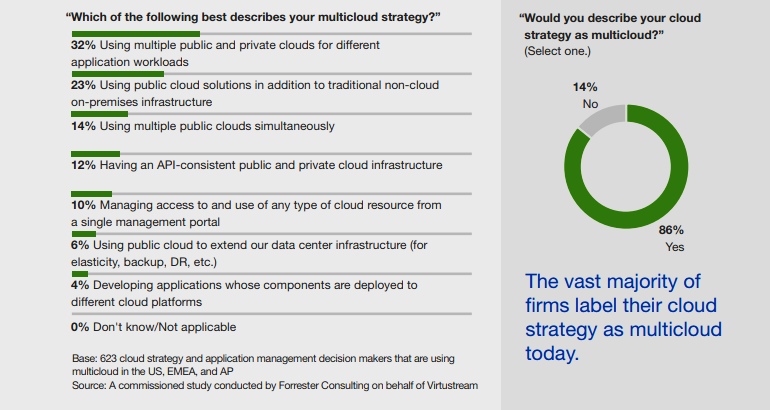
You can have highly available apps existing in one ideal cloud solution and actually sensitive data that you don’t need to access often in a different cloud solution applying the best multi-cloud approach. This one might be slower but more secure—and that’s OK!
The continuous IT investment will optimize multi-cloud architecture and deployments to recognize actual strategic advantages and aspirations. Are you interested in a closer look at seven of the most influential drivers for multi-cloud investment?
Reasons Organizations Choose a Multi-Cloud Strategy
Recent Forrester research found that almost 80% of enterprises describe their strategy as a hybrid/multi-cloud one. Multi-cloud is quickly establishing itself to be the prospect of business across every sector. To prevent vendor lock-in, drive down costs, and ensure agility, many organizations are now looking to multiple clouds for their operational needs.
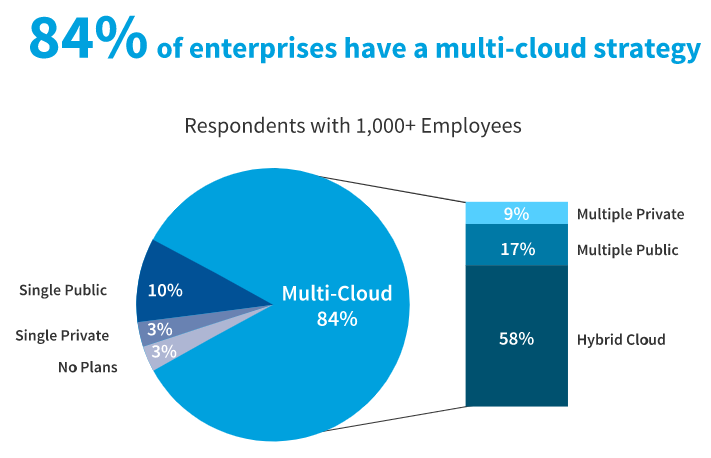
According to the same research, only 42% of organizations regularly optimize their cloud spending, and only 41% maintain an approved service catalog. So, it is always important to remember that without a strong understanding of what is being used and where organizations risk circumventing the benefits of a multi-cloud strategy and settling themselves with high budgets and security risks.

Avoiding Vendor Lock-In
Vendor lock-in occurs when an organization faces too much complexity to transfer its business apart from one cloud service provider to another provider or even bring its data back on-premises.
Organizations that rely on a single cloud service provider normally develop applications that depend profoundly on the unique potentials of that vendor. As those organizations broaden their investment in that single cloud, switching providers becomes more expensive, complex, also takes an enormous time.
In contrast, organizations that already have devoted themselves to a multi-cloud strategy purposely plan for agility and flexibility between multiple cloud providers. With the adaptability to move applications between multiple public cloud vendors, organizations are poised to take recognition of new technologies from all providers and adopt the well-functioning or most cost-effective services for specific application workloads.

Choosing a multi-cloud strategy can help your business avoid vendor lock-in, take support of new and better technologies from other providers, and adopt the most cost-effective and performance-enhanced compute or storage resources for each workload.
Overcoming Data Gravity
Data performs a significant role in daily operations for thousands of businesses. Organizations have traditionally kept their data in on-premises data centers where it could be spelled out by legacy applications, but in the cloud computing era, more are preferring to regulate data in the cloud and analyze them with cloud-based applications.
The term “Data Gravity” refers to the concept that large data sets are troublesome and expensive to move or migrate. If your organization keeps a large volume of data with a single cloud service provider, data gravity could push you to deploy related apps and services with the same provider—even when there are more cost-effective options accessible in another cloud.

Overcoming data gravity is as manageable as utilizing a cloud-attached storage solution that combines multiple clouds simultaneously. The best solutions minimize latency by hosting your data close to cloud data centers.
Better workload optimization
Whenever you approach any public cloud service provider, they offer their blend of physical infrastructure components and application services with versatile functionality, usage characteristics, terms & conditions, and pricing. They also release new features regularly to make their services more efficient, cost-effective, and attractive to customers.

Henceforth single cloud provider can’t claim to provide cost-optimized services that cover every potential business need or use case. But when you switch to a multi-cloud strategy, you can choose the most suitable cloud service provider for each application or workload, leading to enhanced application performance and improved cost-efficiency.
Elevating application performance
When cloud-based application services are released from servers at separate locations, data must travel across several network nodes before entering the user. In this pathway, slow data transfers may degrade application performance and negatively affect the user experience because of high network latency.
The market leaders of public cloud service providers (AWS, Azure, & Google Cloud) operate multiple data stations in geographically different regions, establishing a network of availability hotspots that deliver high-speed service to worldwide customers and users. By affirming a multi-cloud strategy and leveraging cloud services from the above one vendor, organizations can enter new geographies and implement better application and data performance for their users, wherever they are located.
Curbing Shadow IT
When autonomous business units within an organization select any technological solutions without the supervision of the IT department, shadow IT happens. Shadow IT leads to security concerns, notably whenever staff members use unsecured platforms outside of the organizational firewall to transact sensitive data. Based on the Gartner prediction in 2020, 30% or more successful cyberattacks will target Shadow IT resources within enterprise organizations.
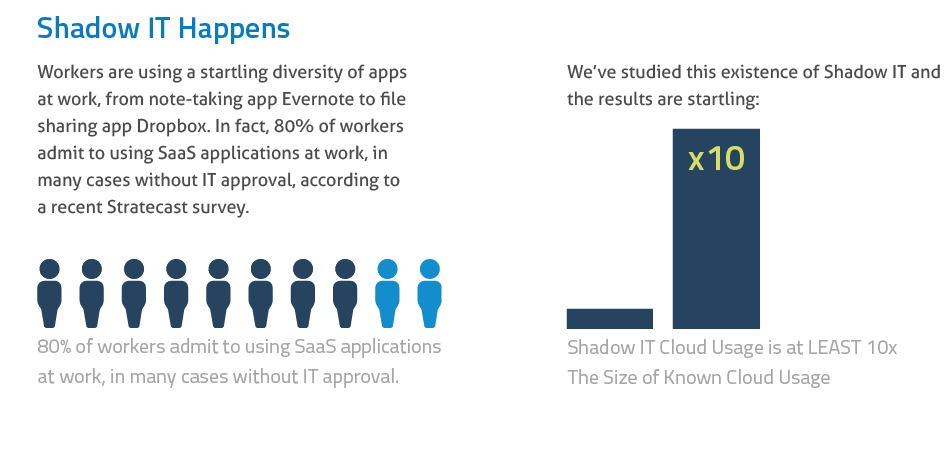
Organizations that are now adopting a multi-cloud approach can speed up their adoption of cloud services that drive employee productivity and collaboration, reducing the inducement for employees to execute new technologies without going through the channels.
Enhance disaster recovery capabilities!
A good number of public cloud service providers offer 99.5% uptime as part of their service level agreements — yet unplanned brownouts happen, and they can be extremely costly. According to a 2019 IT survey, it has been observed that organizations experienced an average of 830 minutes of unplanned downtime during the year, with an average cost of $5.6 million.
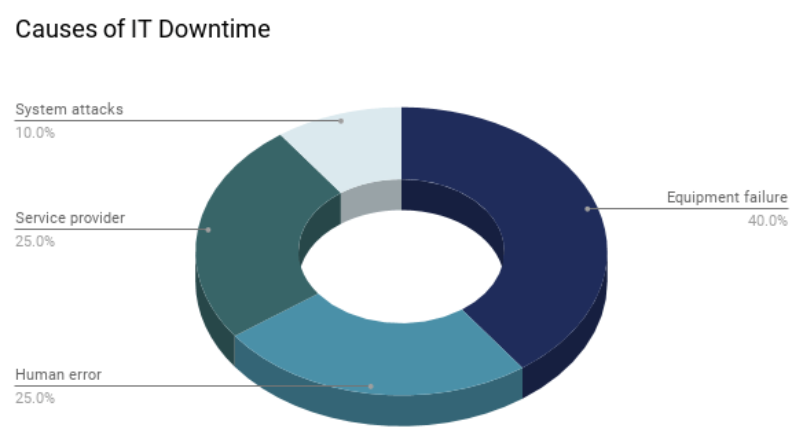
Organizations can respond to unplanned service outages by failing over their workloads from one public cloud to another with the help of a multi-cloud strategy. We provide our clients a customized solution on their failover models based upon application-specific needs, taking advantage of trade-offs between cost and performance to achieve a fully optimized disaster recovery strategy.
Meeting regulatory compliance and requirements
More organizations than ever now desire to meet regulatory compliance provisions referred to as data localization or data residency. Data localization laws may prohibit organizations from exporting data about a nation’s residents to other countries, requiring that the data be processed and locked away in the same region where it was collected.
Organizations can observe data localization or residency laws through a multi-cloud strategy by taking the assistant of cloud service providers with regional accessibility zones and data storage infrastructure.
Why should you choose Inovar to run your strategy?
Multi-cloud strategies are inherently complex. Legacy systems, disparate data sources, and different applications may start creating a unified plan for a momentous task. That’s why, to have multi-cloud perfect, more and more companies are searching for partners to help. The bespoke partners known as managed services providers help organizations embrace the cloud with speed, accuracy, and security.
There are many service providers out there. How do you understand which one is most competent for your organization?
According to the latest Forrester Wave: Multi-cloud Managed Services Providers report, enterprises should consider managed services providers that meet three criteria:
First, the provider should be able to uphold the organization during its entire cloud journey, from initial planning to migration, execution, and monitoring. At Inovar, we provide end-to-end services. We always try to know our pain points, requirements and suggest to you the best-suited solution. We offer you the supervision that you need to select the right capabilities to accomplish your business objectives- from cloud services to deployment, operation, and management.
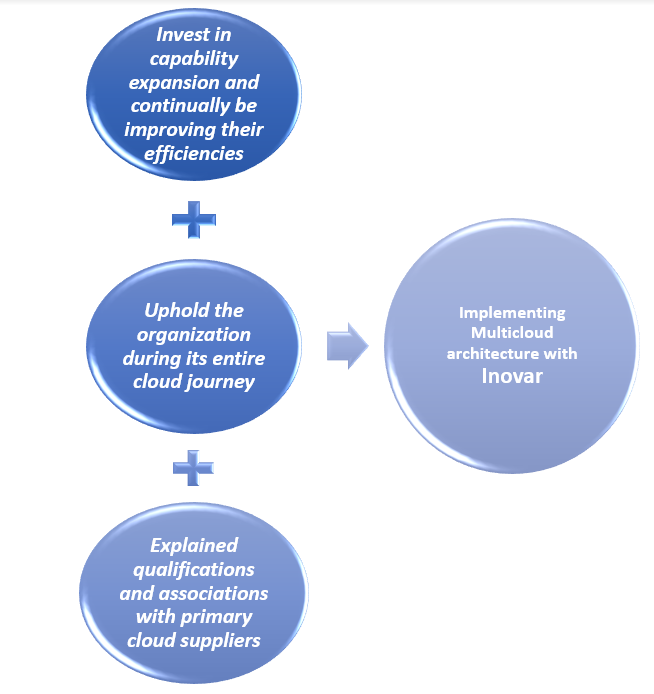
Secondly, providers must have the strength to invest in capability expansion and continually be improving their efficiencies. Cloud is one of the broadest platforms where technology is emerging constantly. Considering this fact, we always keep an eye on what is coming and suggest the best design strategy for resilience and success for years to come.
We maintain an atmosphere where you can promptly innovate, develop, obtain the ideal data at the right time, transfer workloads around as required, and draw full advantage of the latest progressions in AI, automation, analytics, and more so you can constantly iterate and enhance everything from applications to business processes. Starting from setting up your strategy to apply the best-automated approach, we try to ensure real-time optimization and help you build the skill sets you need to become more cloud-native.
Third, providers must have explained qualifications and associations with primary cloud suppliers. Our vendor-agnostic strategy lets you connect with the best services from well-known providers: Inovar multi-cloud platform is accredited by partners including Amazon Web Services (AWS) and Microsoft Azure for superb delivery and compliance to industry standards. Here you can find multiple options on the combination of vendors and get what you need.
Since most organizations are in business to generate money, we can safely say a multi-cloud strategy contributes to cash flow by taking care of money. Usually, challenges and solutions become more complicated when people address them sound more complex. But having the most suitable plan and the best people will ensure that your strategy lives for a very long time. If you are also looking for the same please reach out to us, we would love to collaborate.
Business process automation now becomes the new norm at the workplace to cope with a fast-paced economy and growing challenges for modern business. While a few organizations may very well consider automating their IT tasks, RPA likewise means to help them rehashing the way they work together, uplifting their consumer loyalty and fortifying employee work values. The necessity of bringing automation has given a boost to Robotic Process Automation (RPA) solutions. But AI (Artificial Intelligence) comes into the center stage as entrepreneurs craving more assistance from robotic process automation. Near future, it would be hard to imagine the RPA solution without AI integration.

According to Forester’s 2019 predictions, the combination of RPA and AI is becoming the new strategic
investment in the corporate world. AI and RPA are emerging automation technologies with enormous potential. The combination helps businesses in achieving tremendous growth in such a competitive market.
You may curious why a business should combine these two technologies?
The reason is simple- RPA has no capability of cognitive awareness, and AI brings it in the customized solution. This combination of AI and RPA adds up to intelligent process automation (IPA). In interest to machine learning algorithms and RPA, IPA also incorporates process management software, natural language processing, creation, and cognitive agents, or “bots.” According to McKinsey, IPA can –
- Add up to20 to 30% improvement in proficiency,
- Reduce the processing time by 50 to 60 percent!
Make an improvement in ROI in triple-digit percentage. TMR (Transparency Market Research) has predicted RPA will be prevalent in the corporate world that its market to reach up to $16 billion by 2024. On the other hand, AI focused on imparting intelligence in the machines and connected devices through speech recognition, decision making, and predictive analysis.

As AI is gaining ground swiftly across the world, it can be integrated with other emerging technologies like IoT and Blockchain to realize the futuristic concepts of smart cities and secure transactions sequentially. McKinsey foresees AI to deliver around $3.5 to $5.8 trillion in value to the world per annum.
How AI enhances RPA services
AI and RPA combination enables modern enterprises to leverage the benefits of both these technologies in accomplishing incomparable tasks with higher efficiency. It is like something beyond the range of a customized RPA solution because it develops to perform the same and repetitive type of work.
At the point of a substantial change is anything but a reasonable alternative for companies, RPA can go about as a facilitator to enable organizations to grow and include value. It also permits them to appear with strategic frameworks around investment they’ve efficiently made into their custom frameworks. The assimilation into AI is the following stage of this granular, more responsive type of change, with more business exercises either completely or partially automated by progressively refined means. It is known as cognitive RPA or CRPA.
RPA alone imitates human action through different AI capabilities, machine vision, speech recognition, and pattern identification capacities and can deal with organized, semi-organized, and unstructured data. However, infused with machine learning gives robots a chance to figure out how to process and enhance tasks that ensure probabilistic conduct.

AI integrated Robotic Process Automation solutions bring the capability of gathering and sharing valuable information with different systems for better decisions. Customized RPA solution can utilize data fetched by AI and performs the complex task with ease. Adding up, AI, commonly with cognitive technologies and ML (Machine Learning), enables robotic process automation by preceding a human response in the workflow.
The humble bot
Organizations aren’t looking for just a bot. They have been looking for a platform with orchestration and integration where, they could readily adopt modern technologies and combine them with intelligence. Now, most organizations are strategizing to automate most of the steps of a business process and then applying a different level of intelligence. Hence, when picking vendors for their bots, the enterprises keep their eye towards that future.

Just like, Germany’s ZF Group, an automotive supplier has started applying intelligence to its business processes just over a year ago and created a bot to answer the most repetitive questions. According to the company’s IT manager around their corporate communication, they have a lot of repetitive work. Furthermore, they receive a lot of emails with repetitive questions coming into their inboxes. Automated integrations and orchestration were their first goal, and they also wanted a platform with built-in checks and balances. Finally, they choose a bot platform that offers a management, governance, and language support layer underneath the bots, called stateful network for AI process (SNAP), which will stop a bot if it demonstrates anomalous behavior.
Real-time Decision support system
Decision points are another way to add intelligent decision points into a traditionally automated business process. Nevertheless, cognitive technologies and machine learning direct out to be even more severe. In general, when AI technologies are integrated with RPA stages will automate the emotional and judgment-based process.

Just like American Fidelity Assurance, an insurance policy provider turned to UiPath, an enterprise RPA vendor, and AI platform Data Robot, to add intelligence to its processes. A system that can manage and execute real-time decisions through AI is the best option for automating complex decision processes. Applying high-level analytics and machine learning those systems to become intelligent and continually adjust and discover from new, contextual data. They set up a real-time decision-making system in form of RPA that helps to transfer highly complex problems in real-time applying AI-based analytical decision-making.
For investment firms, real-time decision-making can analyze thousands of business inputs, constraints, and options and arbitrate between multiple internal targets and trading decisions. It can apply an analytical constraint-based optimization approach to models across thousands of possible actions – whether it be specific content, an offer, a price, a sort order, or a recommendation – and determine the best outcomes for the organization. sometimes it qualifies those choices upon certain criteria from profitability, risk, or revenue perspective.
Sometimes, the traditional approaches to RPA may hit a decision point that is too complex for simple automation. Considering the facts, organizations are also looking at using AI for process mining to automate process discovery rather than have business analysts figure out what happens in the company.
Process mining
RPA-Robotic Process Automation is transforming the system many organizations function. Process Mining enables companies to holistically experience their methods and recognize process advancement possibilities to boost efficiency and overcome costs. Its 360° view of processes enables hyper-automation—standardizing and accelerating enterprise automation using technologies, such as machine learning (ML) and artificial intelligence (AI).

The conventional way to business process management involves business analysts talking to managers and employees, carrying audits, then creating charts that illustrate the organization’s various business processes.
Sumeet Vij, director of the strategic innovation group at Booz Allen Hamilton, has mentioned how clients are presenting process workflow automation and how things happen, bottlenecks are different. When it comes to process mining, machine learning helps people experience a picture of how things are actually happening. New tools will update the processes and spot anomalous behavior in real-time with the evolvement of business.
Sometimes, a business process may be viewed as charts, such as Visio diagrams, and managers can drill down into the process, down to the level of individual transactions.
Business process analytics
Some organizations have sufficient business process data that they can instantly view the overall picture of what’s happening and make analyses and forecasts. Organizations are taking the exhaust from the RPA process and trying to capture that, learn from it, and make those processes smarter.
Seann Gardiner, senior VP of business development at Data-Robot (an AI platform provider), mentions if a company has a strong focus on process-level automation and can manage that data, then it might be ready. But strong leadership is also mandatory to make the process successful. Business leaders who believe in automation and an AI-first mentality can make the organizational changes needed.
The use-cases of intelligent automation will likewise keep developing as new AI procedures and solutions enter the marketplace, drastically changing the future working environment. It can perform even complex and unique business actions like humans as an advanced solution. However, there is no point in believing that this combination will replace humans as they remain the controller of the RPA +AI combination by building the rules and manage the operation. The combination of RPA and AI had aimed to bring a digital transformation in the companies and adding more value over the period.
For organizations to use this innovation completely, they initially need to see how these solutions can change their procedures and apply strict governance to settle on beyond any doubt their decision-making is paramount. If organizations attempt to actualize these connected yet granular solutions over their companies, it will enable them to drive a double speed change and pursue new heights in Business and IT maturity level.